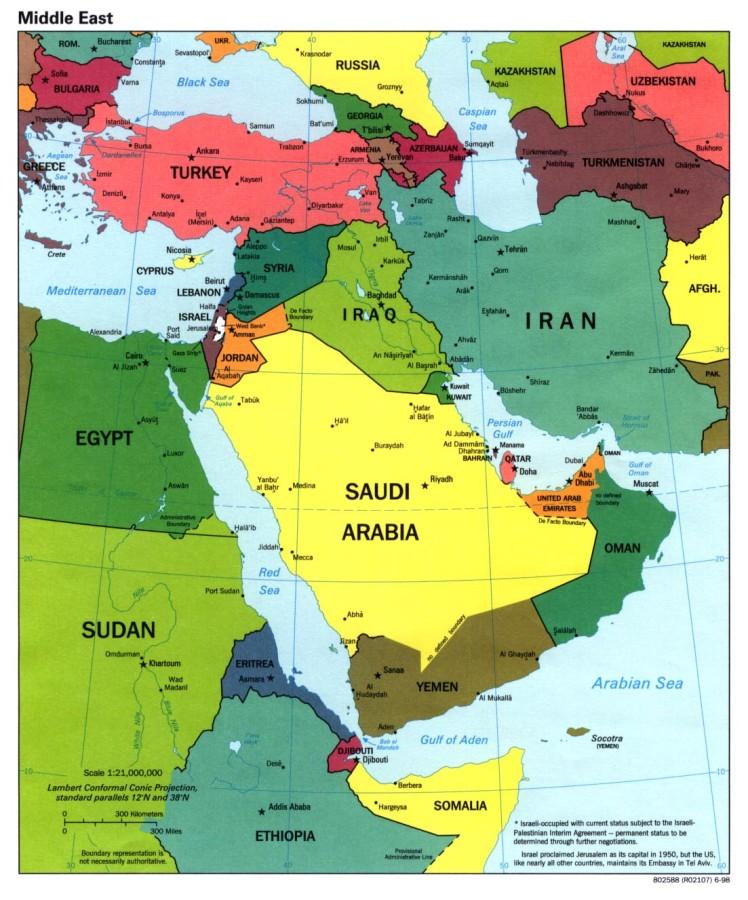As the U.S. has begun conducting airstrikes against ISIS militants in Iraq and Syria, it has relied on the ground forces of the Kurdish Army to perform large-scale ground assaults and halt the expansion of the “Islamic State.” The Kurds, a longtime ally of western nations, have enjoyed the benefit of US aid in the form of weapons and financing. Rather than putting American lives in danger, the U.S. and other NATO members have chosen to equip their Middle Eastern allies. This strategy of arming local and regional groups or governments against a larger threat has been a staple of U.S. foreign policy for decades. However, this strategy has not always yielded remarkable results. In fact, it has often come back to haunt the U.S. and its top officials. In this article, I will present a few examples of this policy in action, and its consequences.
Soviet Invasion of Afghanistan
At the height of the Cold War in 1979, both the U.S. and Soviet Union had a hair-trigger mentality, anxiously waiting for the other country to make the first move. The U.S. was particularly concerned at the notion of Soviet expansion and the spread of Communist ideals, and sought to halt through any means necessary. In some instances, this meant direct intervention (as in Vietnam), but in other situations, such as the conflict in Afghanistan, the United States fought “proxy wars” in which they had vested interest, but were not doing the fighting themselves. Shortly after the initial Soviet invasion, President Jimmy Carter and other top U.S. officials contacted Pakistan leader Zia and offered him millions in economic and military aid in return for helping Afghan rebels. Through Pakistan, the U.S. would funnel money and arms and also train mujahideen (“fighters of the faith”) rebels for war against the Soviets. In total, Congress dished out over $3 billion in aid to the mujahideen. Fast forward to 1988 — the Soviets, growing weary of the costly war and facing their own issues at home, pulled out of Afghanistan. The country laid devastated by almost ten years of conflict, which killed hundreds of thousands of Afghans and forced almost three million to flee the country, while creating a power vacuum. Out of these ashes rose the Taliban, a fundamentalist Islamic group which established itself as the government in 1994. Many of these hardline Muslims were taught and trained by mujahideen veterans at religious schools, and training grounds and camps operated by the CIA during the civil war became havens for militant terrorists, including, in a cruelly ironic fashion, Osama bin Laden.
El Salvadoran Civil War
While the Soviets battled rebels in Afghanistan, the U.S. was also keeping a close eye on a much closer threat, albeit less direct, in El Salvador. Not only does this have relevance in modern history, but these events have a Jesuit connection. Tensions had been simmering in El Salvador throughout the 1970s, but it was not until the assassination of Archbishop Oscar Romero in 1980 that civil war erupted throughout the country. Shortly after, the murder of four American women spurred President Jimmy Carter to cut off aid to the El Salvadoran government. However, following the 1980 election of Ronald Reagan, the U.S. policy in El Salvador changed gears and focused on the containment of Communist ideals. The U.S. government saw the Salvadoran government as a potential barrier against the leftist guerrilla groups who were waging war. They began pouring money into the right-wing government and the military against the rebels. Like in Afghanistan, the civil war brought about massive damage to the tiny country’s infrastructure and a huge death toll considering the size of the nation. U.S. intervention was only halted by the killing of six Jesuit priests and two civilians at a university, which shocked the international community into action. An investigation led by Congress after this set in motion a U.N. backed accord which ended the almost 12 years of civil war.
While these may only be two examples, it is likely that the U.S. has and will continue to covertly fund groups and governments which best represent their interests, both domestically and abroad. It is easy to say that this strategy has had mixed results at the least, but then again, it is often difficult to justify American military intervention to the public. Against a barbaric group such as ISIS, this strategy may appear to be justified, but it is clear that the effectiveness of the strategy should be weighed against the future consequences that it may bring about.


